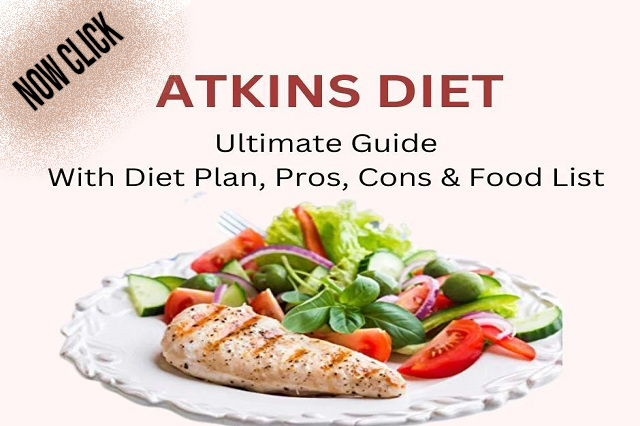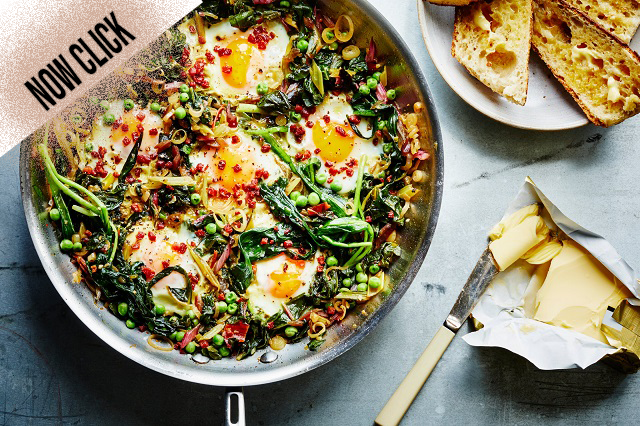The initial example of this strict eating approach is the Atkins diet, which it supplanted. Right present, the ketogenic diet may be the “it” low-carb diet for weight reduction. “Atkins and keto are both low-carb diets that may benefit weight loss, diabetes management, and heart health,” says Vanessa Rissetto, RD, a nutritionist located in Hoboken, New Jersey.
The main distinction between Atkins and keto, according to Rissetto, is that you gradually increase your carb intake with Atkins while keto is significantly higher in fat. There are currently three variations of the diet, which is also known as the Atkins Nutritional Approach.
Recommended for:
- More than 40 pounds (lb) to lose.
- Possess a waist size greater than 40 inches for men and 35 inches for women.
- Have type 2 diabetes or prediabetes.
- They wish to keep their weight.
- A pregnant woman.
The 3 Atkins Diet Plans Explained.
All Atkins diet versions lay a significant focus on consuming protein and healthy fats while limiting net carbohydrates, which include those found in vegetables. Specific carbohydrates are put back into your diet as you approach closer to your weight reduction target.
According to the Atkins diet, net carbs are calculated as total carbs minus fiber and sugar alcohols. (Remember, the U.S. “Net carbs” is not a term accepted by the Food and Drug Administration (FDA).
While Atkins 20 and 40 have different phases, Atkins 100 is a lifestyle approach that recommends consuming no more than 100 net carbs per day. In the initial “induction” phase of the diet, you are only allowed to consume 20 (g) of net carbohydrates. In the initial “induction” phase of the Atkins 40 diet, however, you are only allowed to consume 40 (g) of net carbohydrates, which gives you a little more leeway in the initial foods you can eat (such as some fruits).
Twenty Atkins foods.
- Foundational vegetables like cucumbers, spinach, and broccoli.
- High-protein foods like eggs, chicken, and beef.
- Almost all types of fish, including salmon, cod, flounder.
- Oils such as butter.
- Several types of cheese, including cheddar, goat, Swiss, and parmesan.
40 Atkins Foods.
As long as your daily net carb intake stays under 40g, you can eat all of the aforementioned foods while adhering to the Atkins 40 plan.
- Seeds and nuts.
- Beans are a type of legume.
- Vegetables high in starch, such as potatoes, squash, and beets.
- Such as whole-grain pasta, whole-grain rice, and barley.
Foods that fit the Atkins diet.
As long as you don’t consume more than 100 g of net carbs per day, Atkins 100 adherents are allowed to eat almost any food. It’s best to limit or avoid sugar and refined carbohydrates since they can quickly add up to your daily carb intake.
Online resources for the entire Atkins diet are cost-free.
This diet is based on the idea that by counting and limiting carbohydrates, the body’s primary energy source, your body will be forced to burn its fat reserves instead, aiding in weight loss. The main goal of this fad diet, like many others, is to give up refined sugar and flour-based foods. Even whole grain foods high in carbohydrates are off-limits until you enter the maintenance phase, though, if you’re trying to follow the Atkins 20.
“A carbohydrate-free diet may result in weight loss at first.” However, Popeck cautions that omitting complete food categories such as grains, milk, yogurt, and fruit is definitely not a smart idea since they lack vital nutrients. “There is undoubtedly a lack of fiber, calcium, potassium, and other vitamins and minerals.”
The Best Foods on the Atkins Diet to Eat and Stay Away From.
All programs advise staying away from refined carbohydrates and sugar, says Popeck. Additionally, the following are some of the key foods that each plan will require you to consume and stay away from:
The Atkins 20-food list
- Consume essential vegetables, such as spinach, cauliflower, and broccoli, as well as butter and other healthy fats, nuts, seeds, and the majority of cheeses.
- Initially, stay away from starchy vegetables like potatoes, starchy fruits like pineapples and mangoes, and grains.
- Consume all the Atkins 20-approved foods as well as fruits like cherries, berries, melons, legumes, some starchy vegetables like squash and potatoes, whole grains, and some legumes.
- Pretzels and other white or processed carbs, as well as hidden sources of sugar, should be avoided.
Is the Atkins diet suitable for vegetarians and vegans?
Vegetarians and vegans can follow the Atkins diet, but it will be more challenging to reach your protein goals because many of your favorite protein sources, like fish and meat (and dairy for vegans), are forbidden.
In light of this, scientists in Toronto produced the Eco Atkins diet. It specifies that 31% of calories should come from protein (eggs, cheese, and tofu for vegetarians, soy protein, nuts, and veggie burgers for vegans), 43% from fat (olive oil, avocado, and nuts), and 26% from carbohydrates (fruits, vegetables, and whole grains). Following the vegan version of the Eco Atkins diet for six months resulted in participants losing about 15 pounds, according to a 2014 study.
Vegans and vegetarians following the Atkins diet should also take a multivitamin and a fish oil supplement (or flax oil in the case of vegans) to make sure they’re getting the right amounts of nutrients. Furthermore, since the induction phase of the Eco Atkins diet can be very challenging, it is advised that those following it immediately move on to Atkins 20 (phase 2 or 40).
A 7-day sample
- Depending on which Atkins plan you’re following, your weekly menu will vary.
- 20 Atkins.
- This is what an Atkins 20 diet meal plan might resemble for a week.
Day 1
Avocado and salsa on an omelet with cheese and spinach for breakfast. Lunch Stir-fried roast chicken.
mozzarella string cheese for a snack.
A salad and chicken and broccoli Alfredo for dinner.
Day 2
- First meal of the day Scrambled eggs with sautéed onions and cheddar cheese. The midday taco bowl includes beef, half an avocado, mixed lettuce, tomato, onions, and green peppers.
- Snacks include the Muffin in a Minute and Atkins Caramel Chocolate Nut Roll Bar.
- Dinner: Fish, cauliflower, and a spinach salad with an artichoke sauce.
Day 3
- Tomato, Avocado, Spinach, and Monterey Jack Stacks for Breakfast.
- Orange chicken from frozen Atkins for lunch.
- Atkins Milk Chocolate Delight Shake and 2 stalks of celery with 2 tablespoons (tbsp) of cream cheese are the recommended snacks.
- Dinner was stuffed pork chops with fonduta, fennel gratin, and broccoli.
Pros
Following the Atkins nutritional plan may have a few benefits.
One benefit of the diet is that it is not too difficult to follow. According to clinical dietitian Susan Kraus, RD, of New Jersey’s Hackensack University Medical Center, people feel it’s easy to follow. You focus on a few food categories, and it’s simple since you don’t have to measure items and you don’t feel deprived.
Furthermore, the Atkins diet’s core principles of substituting real foods like leafy greens and healthy fats for processed foods in your diet each day can significantly improve your health and even lower your risk of developing chronic diseases, according to strong scientific evidence. A review published in the journal Nutrients in 2020 concluded that the body of research opposing processed foods over the previous decade was so strong that it indicated the need for fundamental changes in food sourcing and manufacturing as a whole.
Cons
With any diet that eliminates a whole food group, you’re not going to get all your nutrients, asserts Barbara Schmidt, RD, a nutritionist in private practice in New Canaan, Connecticut.
Another problem is the lack of fiber, a necessary nutrient that can make you feel satisfied and stifle unhealthy cravings. Even if you supplement your diet with vitamins and minerals to make up for the nutrients lost from eliminating these food groups, according to Kraus, you won’t be getting enough fiber. Along with fiber, calcium, and vitamin D, which cannot be obtained by eating this way, there are numerous phyto-chemicals naturally occurring substances found in fruits and vegetables that have powerful antioxidant effects and might not be present in a multivitamin and mineral supplement.
Last but not least, the Atkins diet may result in dehydration, which could cause dizziness or energy loss. Because carbohydrates help your body hold onto water, you lose a lot of water weight when you don’t eat them. According to Kraus, this can also increase uric acid levels and lead to a gout attack, as well as increase calcium loss through urine and put too much stress on your liver and kidneys.



